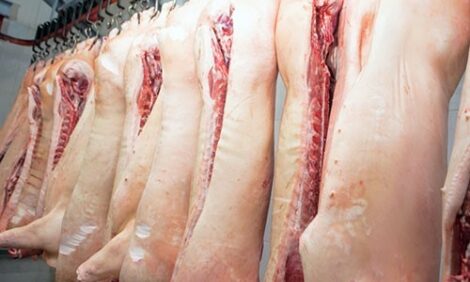



What if Pigs Recombined Bird and Human Viruses?
FRANCE - In 2006, the H5N1 avian influenza virus, which started in Southeast Asia in 2003, was detected in Africa, while a new influenza virus, H1N1, a disease successively referred to as "swine flu", "Mexican flu" and then "influenza A" began spreading in 2009, from Mexico to temperate zones, triggering severe flu infections in man.In 2007, CIRAD and its GREASE platform launched research in Vietnam on the epidemiological role of pigs, which are known to act as a "melting pot" for both avian and human viruses. The studies were conducted in association with the Institut Pasteur in Hong Kong on farms in Southeast Asia and in liaison with the Ecole vétérinaire in Toulouse, and indeed demonstrated that the H1N1 pandemic virus was transmitted from man to pigs, followed by transmission between animals.
Other work under way with the Institut Pasteur in Phnom Penh, in conjunction with a Thai student and Murdoch University in Australia, detected viruses of human origin on pig farms in Cambodia. A new study is now beginning, in association with the University of Hong Kong, on farms in Vietnam and Laos, with a view to improving the detection of new potentially pandemic strains in pigs.
A virus reservoir
A fair share of the global pig population is apparently infected with influenza viruses of varying degrees of virulence, transmitted by both direct and indirect aerial contact with sick animals or healthy carriers. Pigs are a veritable virus reservoir, and above all, may recombine several sorts of viruses. As François Roger, Head of CIRAD's AGIRs Research Unit, explains, "This is unusual, but always a possibility: pigs may recombine avian and human viruses to make a strain that is highly adapted to man. Southeast Asia, where human, pig and poultry population densities are high, is propitious to this type of phenomenon."
CIRAD, which is working on both human and animal data, is part of the One Health Initiative, aimed at optimizing the systems set up to monitor and control these diseases that can be passed between animals and humans.
François Roger will be on the CIRAD stand at the upcoming Paris International Agricultural Show (25 February-4 March, Porte de Versailles, Hall 3, Aisle C, Stand 69).
A few publications:
- Rith S., Punnaporn Netrabukkana, San Sorn, Elizabeth Mumford, Channa Mey,Davun Holl, Flavie Goutard, Bunthin Y, Stan Fenwick, Ian Robertson, François Roger, Philippe Buchy.
Serologic evidence of human influenza virus infections in Swine populations, Cambodia. Submitted
- Trevennec K, Leger L, Lyazrhi F, Baudon E, Cheung CY, Roger F, Sriyal Peiris JM, Garcia JM. Transmission of pandemic influenza H1N1 (2009) in Vietnamese swine in 2009-2010.
Influenza Other Respi Viruses. 2011 Dec 30. doi: 10.1111/j.1750-2659.2011.00324.x.
- Trevennec K, Cowling BJ, Peyre M, Baudon E, Martineau GP, Roger F. Swine influenza surveillance in East and Southeast Asia: a systematic review. Anim Health Res Rev. 2011 Dec;12(2):213-23.








